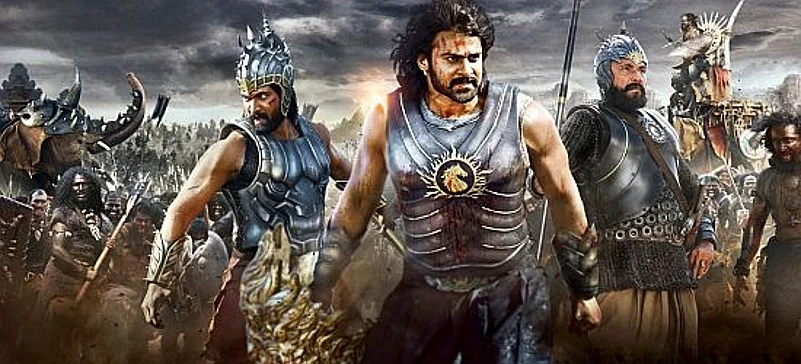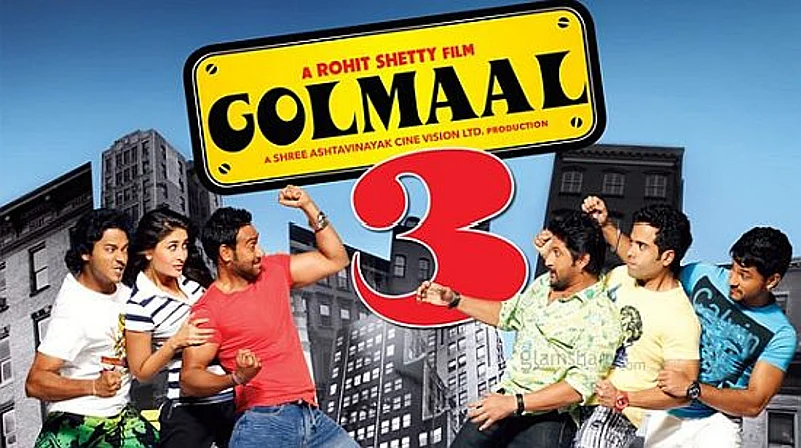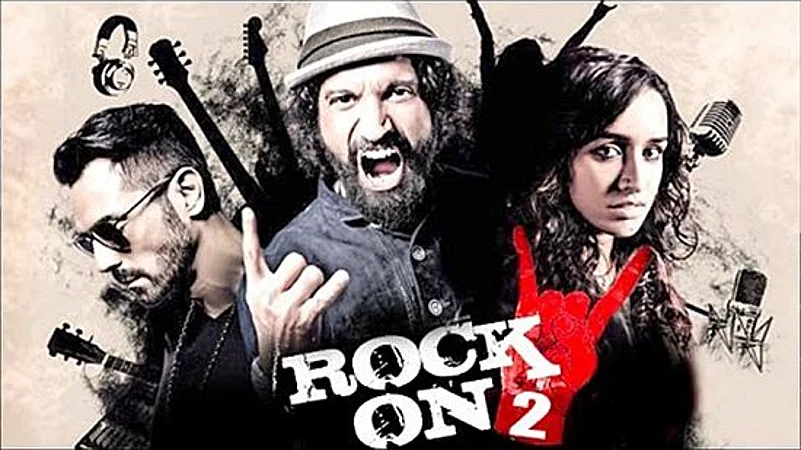Why did Katappa kill Baahubali? If that isn’t the question of the hour, I don’t know what is. For the uninitiated, this in reference to the big cliff-hanger at the end of the gargantuan 2015 epic Baahubali: The Beginning, which fans are eager to have answered in the upcoming second and final chapter to SS Rajamoulis’s mammoth saga. Though technically not a Bollywood film, what Baahubali did to further the cause of narrative-driven franchises of this scale in Hindi cinema is unprecedented, the full impact of which will be felt in the coming years.
In an industry where narrative-focused sagas across multiple films are far from the norm, to end a film on a cliff-hanger hoping that the audience would be desperate for more was a big risk, but clearly one that paid off.
Advertisement
Mainstream Hindi cinema has historically been an escapist fare, designed to take as little effort as possible to digest, rather than challenge the audience in any way, let alone asking them to commit and invest in a given story or its characters across multiple films. That is changing as, among the many trends of the hour within the Hindi film industry, is the ever-increasing focus on sequels and large franchises.

Baahubali: The Beginning is genuine prequel. Overseas, a sequel or prequel refers to a continuation of the same narrative or journey of the main characters, taking place either after or before the events of the original film.
Having said that, if you were to take a closer look at exactly what passes for a ‘sequel’ these days, the answer seems to be an inconsistent mishmash of ‘anything goes’ with filmmakers frequently bending the definition of the term to meet their commercial agenda.
While the West has clearly defined distinctions in what it refers to as a sequel as against a prequel, reboot, remake or spin-off, Bollywood has a far more haphazard, jumbled approach to these.
Advertisement
Overseas, a sequel or prequel refers to a continuation of the same narrative or journey of the main characters, taking place either after or before the events of the original film. A spin-off denotes an entirely new film which focuses on the story of just one specific character or plot point from the original. On the other hand, a remake is a modern retelling of a previous movie, often confused with a reboot which offers a fresh story and requires you to disregard all continuity in an established franchise to allow the makers to reimagine the characters. Spiderman is perhaps the best example of this given its now headed for its third reboot in 15 years.
2016’s Sequel Surge
2016 in particular, saw a sharp uptick in sequels and further instalments of established franchises in the Hindi film industry, such as Sajid Khan’s tired Housefull series. Take a closer look at what were passed off as sequels, and the vast disparity is abundantly clear.
The year began with the latest edition of established sex comedy franchises Kya Kool Hain Hum 3 and Great Grand Masti. Despite these films being a bane, they are classified as sequels despite having no connection to their previous parts. They offer no continuity in the narrative whatsoever. Instead what you’re paying for is the latest incarnation of the ‘sex comedy experience’.
Advertisement

Despite Kya Kool Hain Hum 3 and Great Grand Masti being a bane, they are classified as sequels despite having no connection to their previous parts.
A further example of what was offered up last year by way of a sequel is Sujoy Ghosh’s Kahaani 2, a follow-up to the iconic 2012 thriller. Despite using some of the same elements as the first part such as leading lady Vidya Balan and again capitalising on the haunting underbelly of Kolkata as a setting, Kahaani 2 offered an entirely new story with new characters and was wholly unrelated to the first film. Whilst it opened to a mixed reception, Ghosh’s decision to keep the film under the ‘Kahaani’ banner was no doubt a questionable one.
Advertisement
Sequel Vs Franchisable Property
These are examples of what is perhaps the most consistent definition of what Bollywood considers a sequel. Rather than any sort of narrative focus which furthers the plot set in motion in the earlier part, what you get is a new film and story with a similar setting and at best, some repeated characters. These films are aimed to have you relive the experiences and essence of the earlier instalments whilst being packaged in a new story which ignores the events of the previous films. Thus, they are better defined as reboots rather than sequels. More examples of this include Rohit Shetty’s Golmaal series and Raju Hirani’s Munnabhai films.
Advertisement

Rohit Shetty’s Golmaal series and Raju Hirani’s Munnabhai films are better defined as reboots rather than sequels.
2016 also came armed with a healthy dose of the latest from popular action franchises with Force 2 and Ghayal Once Again. These typically involve using the same beefed-up protagonist from the first instalment and having them face new enemies and obstacles. To their credit, they do offer some sense of continuity as the events of the previous films are still referenced to some extent. Titles like Don or Dabangg are also examples of the same.
Further along the scale, there was Rock On 2, which fits the more traditional mould of a sequel, offering advancement of the story by examining the main characters lives many years after the events of the first film. 2015’s smash hit Tanu Weds Manu Returns would also slot into this category.
Advertisement
Then you have what is perhaps the most pointless variety masquerading as a sequel, referring to films like Anubhav Sinha’s Tum Bin 2 which is more accurately described as a remake given it is but a modern refresh of a similar storyline seen in the earlier film. This is not unlike the logic that had Mohit Suri’s 2012 Aashiqui 2 named as it was when it was merely a modern retelling of Mahesh Bhatt’s 1990 Aashiqui.

Rock On 2, which fits the more traditional mould of a sequel, offers advancement of the story by examining the main characters lives many years after the events of the first film.
These are but a handful of titles from last year to shed some light on the significant creative liberties being taken by filmmakers in how they define sequels and the subsequent confusion that can be felt by the audience.
Advertisement
Why Does It Matter?
To many, this may seem like a trivial issue of semantics which has no real bearing in the wider scheme of things. Most of the discourse surrounding sequels and franchises is focused on the quality of the films, whereas this is entirely an issue of messaging and clarity.
By positioning something as a sequel or prequel etc, it is essentially a signal that informs audience expectations of how interrelated two films may be, how much to invest in a particular story and what they might need to know going in. The problem is that at present the audience is required to work far too hard to discern exactly what it means when a new sequel is announced.
Advertisement
Sequels are by no means a new phenomenon in Hindi cinema with the earliest tracing back to the 1935 Hunterwali, followed up by Hunterwali Ki Beti in 1943. However, they haven’t really become a sizeable part of mainstream cinema until recently, which is why currently most producers appear to be blindly backing franchises left, right and centre.
What’s more, the handful of filmmakers who are trying to push boundaries and mount mammoth stories across multiple films such as the Baahubali or Krrish series, require the understanding and commitment of an audience. To do so is challenging enough within the landscape of Hindi cinema where audiences aren’t as used to seeing such vast canvases explored through multiple films, be they sequels or spin-offs.
Advertisement
The fact is that the efforts of these filmmakers to instil a different kind of viewing experience in audiences aren’t exactly helped by the barrage of other films parading themselves as sequels. If they are going to have their fair shot at amassing a loyal and dedicated fan base, they need an audience to be more accepting of new formats, concepts and ideas, which isn’t helped by the constant mixed messaging those very audiences are currently subjected to.
On a more positive note, there are an increasing number of filmmakers trying to mount such ambitious stories on celluloid such as Ayan Mukherji’s much talked about next - a fantasy franchise rumoured to be titled Dragon, due to star Ranbir Kapoor and Alia Bhatt which is set to unfold over three films.
Advertisement
The Year Ahead
Looking ahead, there doesn’t seem to be many signs of consistency on the horizon. The year so far has seen Jolly LLB 2 followed by another ‘brand sequel’ in the form of Badrinath Ki Dulhania – a follow-up to the 2014 Humpty Sharma Ki Dulhania featuring the same director and cast. Still to come from this year on this front is Golmaal Again, the fourth in Rohit Shetty’s comedy franchise.
On a more uplifting note in terms of pushing boundaries, this year did have the recent Naam Shabana– a through and through spin-off to Neeraj Pandey’s 2015 Baby. Still to come is Baahubali: The Conclusion which is no doubt a new set of global records waiting to be made.
The year ahead also has its fair share of more traditional sequels lined up with the likes of Fukrey Returns, the next in Ram Gopal Varma’s gangster saga- Sarkaar 3, as well as the action franchise box ticked with Tiger Zinda Hai, a sequel to the 2012 Salman Khan-starrer Ek Tha Tiger. Finally, to meet the year’s quota of a reboot-remake-sequel there’s David Dhawan’s Judwaa 2 starring Varun Dhawan, a follow-up to the popular 1997 comedy starring Salman Khan.
Advertisement
There is much talk at present about how poorly sequels seem to be fairing at the box office, barring a few exceptions. You have to wonder whether it’s because people have become somewhat disenfranchised, pun no intended, by large franchises and the effort required to differentiate between the more credible, story-focused ones from the experience-driven kind.
In the end, it needs to be made clear to an audience exactly what they are being offered when they see a ‘2’ and the end of a title. At a time with Hollywood investing in entire cinematic universes which require previously unheard of levels of commitment by audiences, we are still struggling to fall under one uniform definition of what continuity means to our films.




















